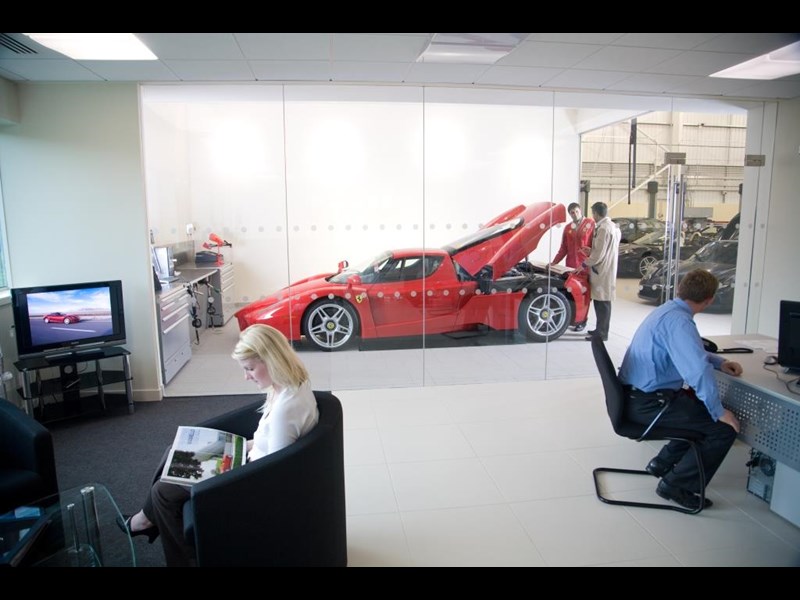Police have agreed to attend banger races to check for stolen cars following a call from concerned owners' clubs, which say cars are being stolen for events. This comes on the back of news of a new 100-BMC Farina event, the A60 Amble, launching at Arlington Stadium next July.
The event has sparked anger from people in the classic car movement, who do not wish to see these cars destroyed. It is one of several events for pre-1970s cars being planned for 2015. The Federation of British Historic Vehicle Clubs (FBHVC) is set to discuss its stance on banger racing at a meeting this month.
Meanwhile, clubs are hoping that the FBHVC will support the proposal by representatives from a number of classic car clubs that uniformed police officers should attend events alongside independent classic experts if there is suspicion that stolen cars are present. In addition, banger racers would not only be prosecuted, but have their roll cages and other equipment used for the sport confiscated.
The idea has come from members of clubs catering for classics often targeted by banger racers, among them the Cambridge Oxford Owners Club (COOC). They have joined forces to discuss ways of to address the problem of car thefts, which some people allege increase prior to major classic banger races.
The Post Vintage Humber Car Club, Rover P5 Owners Club, P4 Drivers Guild, Ford MkI Owners Club, Triumph 2000 2.5 Register and the Ford Granada MkII Owners Club have also expressed concern about the amount of cars used for banger events, said COOC spokesman John Lakey.
John said: ‘One reason why our club is so strong is that we have members who used to race the cars, fell in love with them, and then restored an example to keep - myself included.
‘We also have people who still race bangers, but I'm sure that every COOC member would agree that stealing cars for racing is wrong and every effort should be made to catch those responsible. The vast majority of racers are enthusiasts who strip cars sensibly and sell parts to other club members.’
Geoff Lancaster, FBHVC spokesman added: ‘The Federation of British Historic Vehicle Clubs (FBVHC) was most interested proposals to help prevent cars being stolen for banger racing. We haven’t heard from the clubs involved yet but will certainly look forward to hearing what they have to say. He would also raise the news about the A60 amble at the Federation’s next committee meeting.’
Rover P5 Owners Club chairman and membership secretary Geoff Moorshead supported the proposals for police attending events to detain rogue banger racers. He said: ‘It would deter people from doing such things in the future. We we always warn people to be vigilant as far as security and classics is concerned.’
Price rises and reduced numbers of available Rover P5s had reduced the numbers appearing with legitimate banger racers.
Commenting on the planned Farina banger race, John Lakey added: ‘I also feel the A60 Amble is an idea past its time. The cars have a great, and you could argue, glorious history in the sport but they are now just too rare to be smashed up in this way. It's also a possible catalyst to theft and that's unacceptable. We should be racing Mondeos and Vectras not A60s or Rover P5s.‘
Geoff Lancaster strongly suggests owners to use a ‘DNA kit’ to mark their cars. Markings can be read under ultra violet light. The FBHVC is offering a kit called Selectamark.
The A60 Amble is being organised by Spedeworth Events, which has been in business for 55 years. Owner Dean Wood said: ’The cars being raced tend to be past restoration and yield valuable spares which everyone can benefit. We want to work with the classic movement. Police would be welcome at our events and if ever we suspected a car had been stolen we would instantly call the police
Crime Prevention and Design Officer with West Midlands Police, PC Simon Barrett regularly gives talks to classic car organisations and works with other police forces in cases of crime involving classics.’
‘We absolutely support any proposal to have police and inspectors at these banger racing events if there’s crime suspected. If we find a car is stolen it would be seized with its contents. We suggest people contact the local police first but we always help put people in touch with anyone who can help in police forces anywhere if we can.’
Simon Barrett can be contacted via s.barrett@west-midlands.pnn.police.uk
Nick Larkin







































